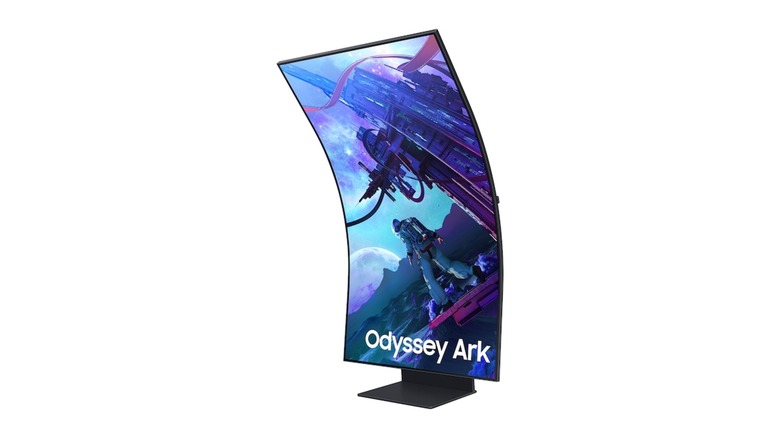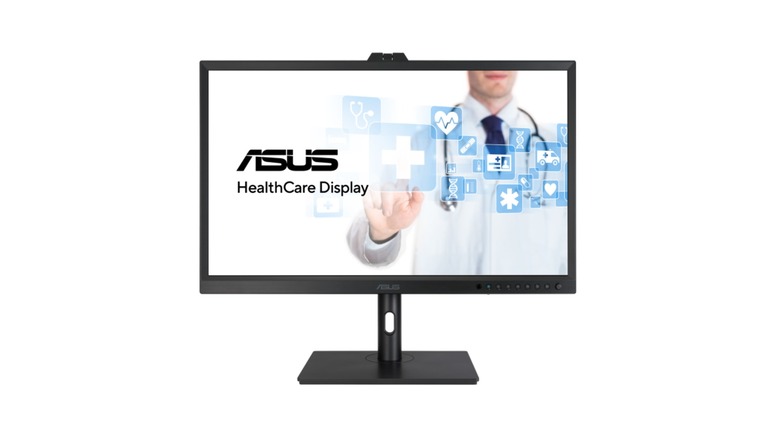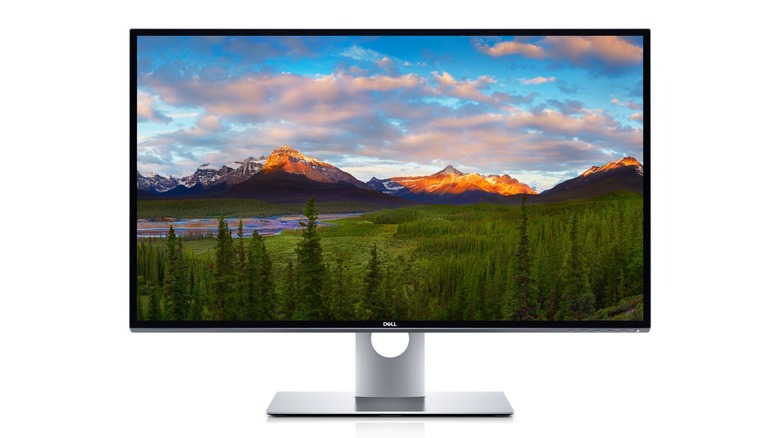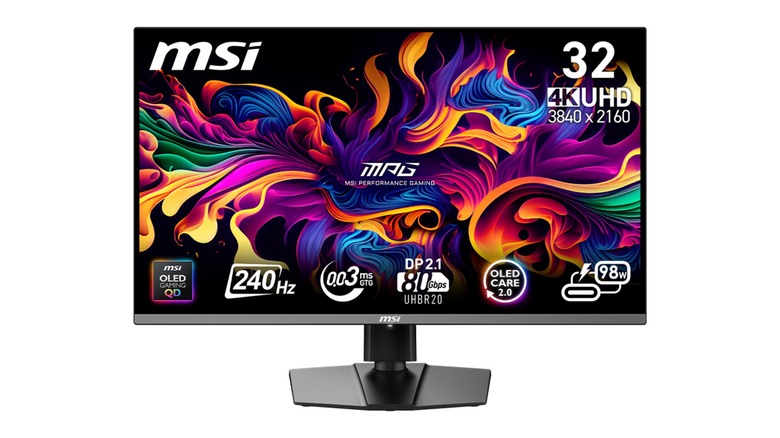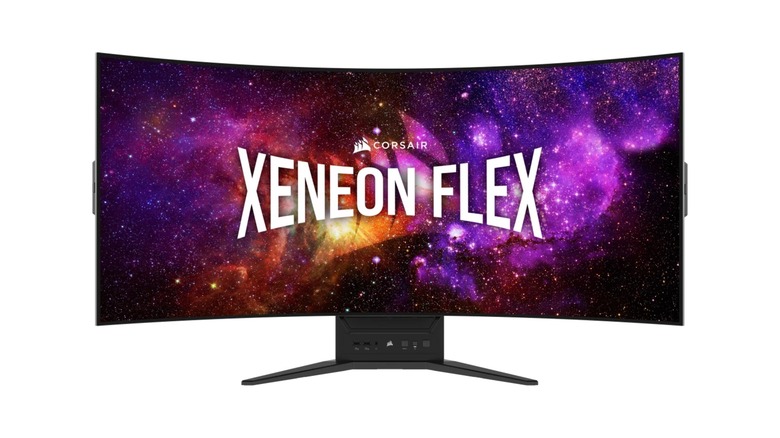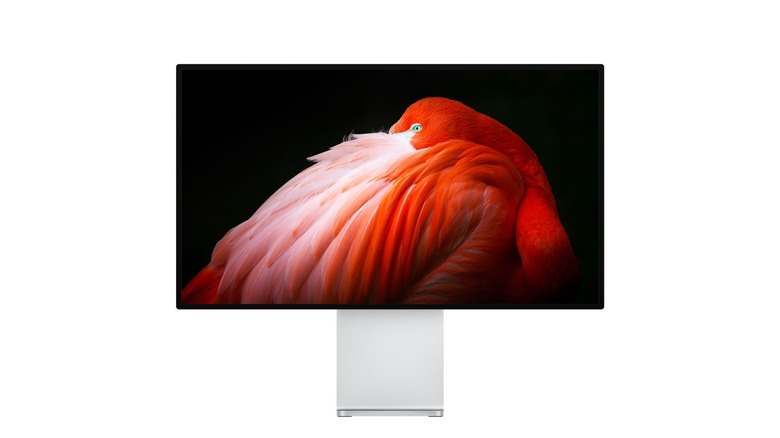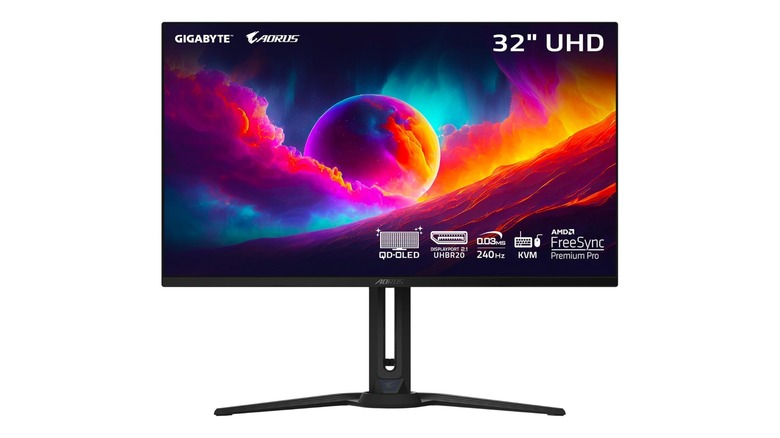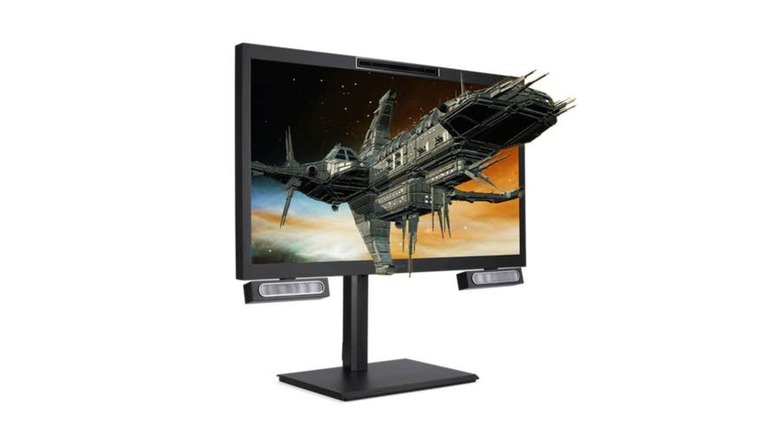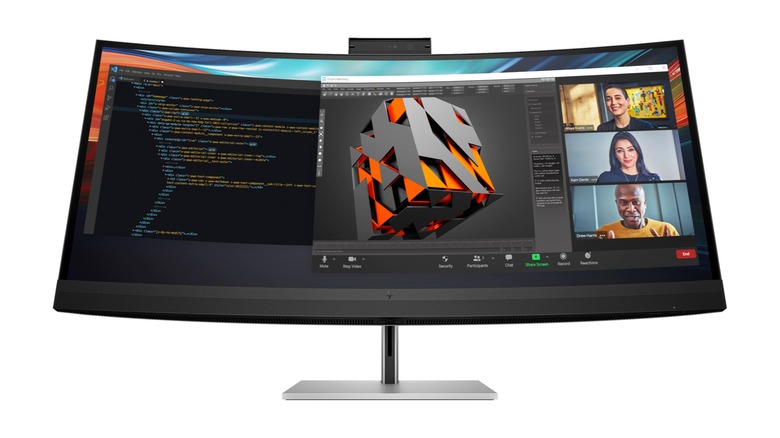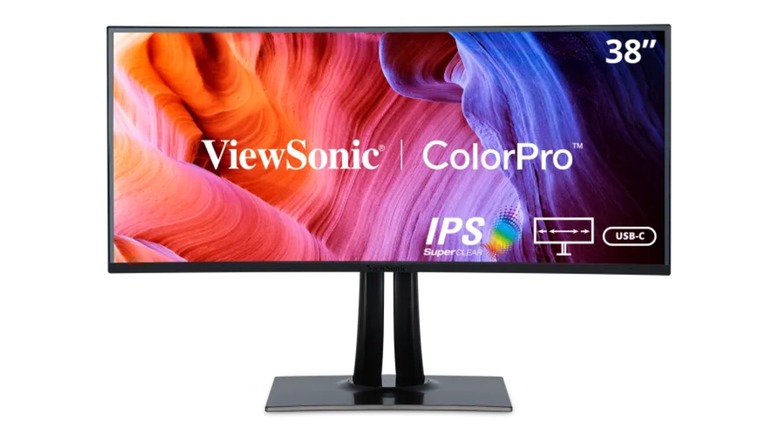11 Of The Most Expensive Monitors For Sale From Every Major Brand In 2025
We may receive a commission on purchases made from links.
As high-resolution displays continue to reach the hands of more consumers, competition between different types of monitors has ramped up in all price ranges. While some might be baffled at the prospect of modern TVs being cheaper than most PC monitors, and yet — ironically — this difference becomes more reasonable when seeing the top-end. Nearly every major company has an expensive PC display that stands above others thanks to unique features or unrivalled performance. If you have an unlimited budget, there are different valid reasons to consider buying nearly every single one.
For the sake of simplicity, this article will only cover monitors that are currently available while judging them based on their MSRP. Sales can often make them cheaper than other displays from the same company, but there are few guarantees over those sales lasting forever. Likewise, the launch price of older products can seem staggering compared to what you'd find today, but many of them simply aren't available from official vendors for that price anymore. A $10,000 price tag on an old 1080p monitor doesn't mean that's the price it should be, especially when that cost might have simply been listed by a greedy third-party seller.
Samsung: 55 Odyssey Ark 2nd Gen
The 55-inch 2nd Gen Odyssey Ark from Samsung is, ironically, a good baseline for what to expect from top-end monitors. Many of its stand-out features aren't too far from what you'd find on cheaper-yet-still-impressive displays, including 4K resolution, a curved screen, and a high 165 Hz refresh rate. Its size is perhaps the greatest reason for its cost, with no other monitor on this list managing to even cross the 50-inch threshold. Thanks to that, it holds a list price of around $2,700 even without any more innovative features or technologies.
Interestingly, although this Odyssey Ark is among the most expensive monitors available today, it's actually not all that costly to own. You can commonly find it on sale for just around $1,800, allowing for enough savings to buy a smaller OLED display alongside this one. It used to be even more expensive, too, with our Samsung Odyssey Ark hands-on experience putting its cost closer to $3,500. It's not a budget pick by any means, but compared to what other companies are providing at this price range, the Odyssey Ark is actually quite tame.
Asus: HA3281A HealthCare Monitor
At first glance, the Asus HA3281A HealthCare display might seem extremely overpriced for what it offers. At nearly $5,000, gamers and other enthusiasts might be put off by its simple 4K display and 60 Hz refresh rate. But as the name suggests, this monitor is designed for healthcare professionals, offering extremely precise colors and lighting features to make it indispensable in a doctor's office. The average buyer probably won't need such unparalleled color accuracy even if they have the deepest pockets known to man, but there are few things you'd want more out of a display if you're managing X-ray scans and microscopic imaging.
If you prefer to look more closely at the Asus Republic of Gamers brand, the PG32UQX is the most expensive monitor in the lineup. It's a 4K 144 Hz display with a 32-inch mini LED panel and a few extra additions, including a small customizable OLED panel underneath the screen itself. Its color accuracy actually keeps it pretty close to the aforementioned HealthCare display, too, only really losing out when it comes to contrast. The price of nearly $2,000 might take the wind out of its sales, especially when comparing it to the other best 4K monitors to take your gaming to the next level, but its more unique aspects allow it to stand out as a strong competitor.
LG: 32HL512D-B Diagnostic Monitor
Like with the most expensive Asus monitor, LG's priciest display is meant for healthcare professionals. The 32HL512D-B isn't exactly a common pick, but you can get your hands on it from storefronts like B&H for around $3,800. Interestingly, quite a few of its specs falter in comparison to the HealthCare display, lacking the same color support and only using an IPS LCD screen. Considering the extra expense doctors will go through for monitors like these, it's strange to think about how a nearly-$4,000 product still cut costs in a few areas.
Despite these shortcomings, the 32HL512D-B still manages to justify its price in different ways. It includes a few unique features, including multiple failsafes to prevent any sort of visual interruption, letting you keep an eye on important medical data even if something causes its signal to cut out. It might not be as high-end as the Asus alternative, but LG's display for medical workers boasts some fantastic reliability.
Dell: UltraSharp 32 8K Monitor
The 32-inch 8K UltraSharp from Dell is one of just a few monitors available with 8K resolution. Of course, you'll need a top-tier graphics card to get that resolution working well in many modern games, and there aren't many other pieces of content made with such high fidelity in mind — which is something we mentioned when asking whether an 8K TV was worth it. Even so, the UltraSharp will actually allow you to view that high-fidelity content in the first place, which is more than what can be said for most alternatives. It might not have a high refresh rate or a fancy OLED panel, but very few monitors will look nearly as good either way.
When Dell debuted the impressive 32-inch UltraSharp 8K Monitor, it was originally listed at around $5,000. Since then, a decent amount has been knocked off of its asking price, but it still takes the cake as the company's most expensive display. If you look at the Alienware displays, instead, you have two different options with prices of just around $900. The first is a monitor with 1440p resolution and a 360 Hz refresh rate, while the other is 4K with 240 Hz, both featuring OLED panels and relatively reasonable costs compared to the UltraSharp.
MSI: MPG 322URX
In many ways, the MSI MPG 322URX display is a lot more reasonable in the realm of high-end monitors. The most impressive thing about it is the response time, dipping down to just .03 milliseconds and outdoing practically every other monitor on the market in that regard. The rest of its features — 4K resolution, 240 Hz refresh rate, and an OLED panel — are all simply the same top-notch additions you'd expect to find from the best of the best. Its $1,300 price point isn't anything to sneeze at, but it probably falls in line with what the average person would expect an expensive monitor to be like.
Generally, monitors with 4K resolution and a refresh rate higher than 60 Hz are still quite expensive, and OLED displays drive the cost up even higher. The MPG 322URX might still not be perfect in a few areas, mainly when it comes to its size, just being 32 inches and not featuring an ultrawide display. Yet you'll find quite a lot of competition between different displays under $2,000, and this offering from MSI manages to do quite well when put up against them. Response time might not be the most impressive one-of-a-kind feature on this list, but it's one that a wider number of buyers are sure to look for.
Corsair: Xeneon Flex 45WQHD240
Corsair's Xeneon Flex monitor is among the more innovative displays you'll find. While it might simply seem like an ultrawide OLED with high resolution and a fantastic refresh rate, you'd be able to see what makes it special very quickly if you actually got your hands on it. Corsair's 45-inch gaming display literally bends its OLED before your eyes, allowing you to turn it from a flat screen to a curved one with the help of your own two hands. This monitor was the only one of its kind for two years and is still the only one available today, with few rivals managing to show off anything similar in their own lineup.
The Xeneon Flex has an MSRP of just around $2,000. Historically, it's dropped to around $1,100, which would put its price below the less unique 34-inch Xeneon ultrawide if that isn't also on sale. But when considering the lack of consistency on these sale prices — and the availability of the monitor itself — it's not exactly easier to get than those not-so-impressive alternatives. Until a release date is given for competing displays with bendable screens, this is currently your only option to experience this technology if you don't want to rely on laptops and phones.
Apple: Pro Display XDR
Apple's Pro Display XDR is another monitor that's meant more for professionals than the average consumer. It comes with a number of different reference modes to adjust the color and lighting of images, allowing for quite a lot of control in many different art-related tasks. Its specs aren't too impressive otherwise, only coming with an IPS LCD screen and 60 Hz refresh rate, although its resolution is suitably high at 6K. When all is said and done, though, this ends up being the most expensive display on this whole list, coming in at a base price of around $5,000.
Even with its current cost, you might find the true price of the Pro Display XDR to be even greater. If you opt for the specialized nano-texture glass and the unique pro stand, that bumps up the total by an extra $2,000. These do end up providing some extremely useful benefits like anti-glare and maximum adjustability, but it still means you're paying over $7,000 for a 32-inch computer monitor. If you aren't using this for professional work, buying this sort of monitor would be more for the sake of using it as a status symbol than anything else.
Gigabyte: AORUS FO32U2 Pro
We didn't give Gigabyte much credit when looking at major PC monitor brands ranked worst to best, and even its most expensive monitor — the AORUS FO32U2 Pro — isn't all that impressive. It's similar to MSI's priciest offering with a 4K display, OLED panel, 240 Hz refresh rate, and a cost of around $1,300. Even the lightning-fast response time of 0.03 milliseconds is practically identical. They trade blows pretty evenly in just about every conceivable metric, with the only major differences between them being the stands and additional ports on Gigabyte's model.
In a way, the existence of the FO32U2 Pro does sort of invalidate the MPG 322URX simply by having that little bit of extra connectivity. If you're more used to MSI monitors already, though, you might just prefer the latter in the long run. The deciding factors between these two monitors are far more mundane than others on this list, and since they're also the cheapest ones featured here, it's not hard to see why. You could say they're the closest thing to budget displays here, even if they both ask more than $1,000 from you.
Acer: SpatialLabs View Pro 27
At first glance, the Acer SpatialLabs View Pro 27 might not seem like it offers anywhere near the same amount of value as its competitors. The price, $3,400, is a big ask for a 27-inch screen with just 4K resolution and a refresh rate of 160 Hz. But taking a closer look will make the reason for its price pop out at you, as this is a display with the ability to showcase glasses-less 3D. Images, videos, and even games can be viewed with more immersion than what would be possible even with a higher resolution, making it clear why this display is so expensive.
Like Apple's Pro Display XDR, the SpatialLabs View Pro is made for those looking to use this monitor for work. You might end up having some trouble or running into some restrictions if you try to play games on the model rather than design them. For playing, the Predator SpatialLabs View offers an alternative, coming in at a price of just around $2,000. While looking at a laptop with similar functionality, our Acer Predator Helios 300 SpatialLabs Edition review noted that the 3D technology felt like a bit of a gimmick, but it's still unique and impressive enough to leave few questions about why the price is so high.
HP: Series 7 Pro Conferencing Monitor
While it might just seem like another ultrawide monitor, the HP Series 7 Pro Conferencing Monitor is actually quite special. Its resolution is described as 5K2K, allowing it to keep the usual fidelity associated with 4K even with its greater screen space. This really helps make the most of its 39.7-inch size, avoiding any sacrifice to image quality, no matter where you look. Combine that with some impressive color range and a wide number of ports, and you have yourself an ultrawide that pretty much anyone can use.
Not everything about HP's most expensive display is perfect, however. The response time is slower than usual at 5 milliseconds, the panel is a simple IPS LCD, and the refresh rate doesn't go above 60 Hz. It's also priced at a little over $1,750, which isn't all that attractive when looking at ultrawide displays with comparable resolutions like the LG 40WP95C-W. But this is also a conferencing monitor, and you aren't going to find many alternatives with a built-in 4K webcam and noise-cancelling microphones.
ViewSonic: VP3881a
ViewSonic's VP3881a display is, for lack of a better word, odd. As an ultrawide, its resolution falls somewhere between 4K and 1440p, and its color range is absurdly high even when compared to the healthcare-focused monitors. This model clearly isn't made for gaming, with its 5 ms response time and 60 Hz refresh rate, and the panel type is an IPS LED rather than LCD, falling short of the specialized lighting you'd find on an OLED. To top it all off, its price sits at around $1,350, just a bit higher than the cheapest monitors mentioned here.
The VP3881a is an example of just how valuable certain aspects of monitors can be. Most of its high cost can be attributed to its focus on color, which seems to be a constant for some of the most costly monitors out there. Resolution alone can still fetch a high price, and innovative features will always be a major premium unless they eventually become standard in every display. In the end, though, color might be the greatest factor in determining just how expensive a computer monitor can end up getting.

